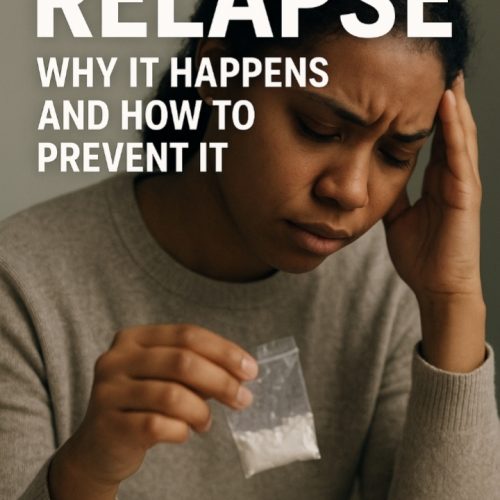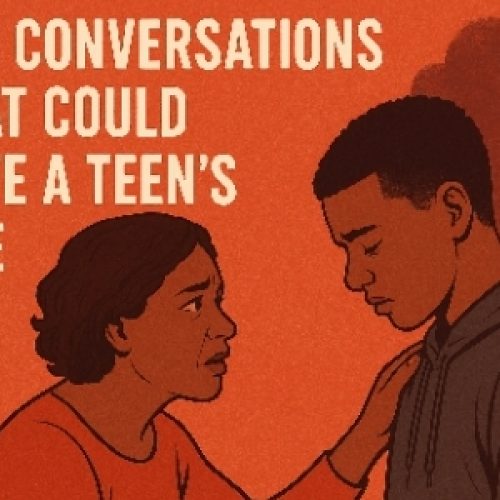WHEN SILENCE SCREAMS: SPOTTING EARLY WARNING SIGNS IN TEENAGERS
WHEN SILENCE SCREAMS: SPOTTING EARLY WARNING SIGNS IN TEENAGERS
It began with something so small that no one in the Okeke household noticed.
Fifteen-year-old Chidinma, once a bubbly chatterbox who filled the living room with her laughter, suddenly preferred the silence of her bedroom.
At first, her parents thought it was normal teenage behaviour, “She’s growing, she needs her space,” her mother would chuckle. Her father added, “Don’t mind her; these children just want to feel independent.”
But the little signs kept piling up.
Her favourite foods went untouched. She became irritable at the slightest provocation, snapping at her younger brother for breathing too loudly. Nights turned into endless scrolling on her phone, her eyes ringed with dark shadows by morning.
Teachers reported declining grades, but her parents, busy chasing survival in a tough economy, told themselves she would “adjust.”
Until one evening when her mother walked in and found a note under her pillow, scribbles about feeling “invisible” and “tired of everything.” That was the first time they realised that silence could scream louder than words.
The Subtle Cries We Often Miss
The story of Chidinma is not unique. Across neighbourhoods, schools, and even within our own families, teenagers are giving us signals, sometimes whispered, sometimes shouted, that something is not quite right.
But here’s the thing: teenagers rarely walk up to adults and say, “Mum, Dad, I’m drowning.” They speak through actions, through changes, through the subtle shifts in behaviour that we often dismiss as “teenage wahala.”
The danger is that by the time the signs become glaring, the child may already be deep into depression, substance abuse, self-harm, or other risky behaviours.
So, how do we spot the early warning signs before silence becomes tragedy?
1. Sudden Withdrawal from Family and Friends
Teenagers are naturally drawn to peers, but when your once-social child suddenly prefers isolation, shuts doors, and avoids conversations, it’s not just “being moody.” It could be loneliness, depression, or bullying eating them alive.
Chidinma no longer sat with her family for dinner. She claimed she wasn’t hungry, but her untouched plate told another story.
2. Sharp Changes in Mood
Yes, mood swings come with hormones, but extreme irritability, unexplainable anger, or prolonged sadness that lasts weeks should not be brushed aside.
Her younger brother would cry, “She shouts at me for nothing.” That was her way of releasing bottled emotions she couldn’t put into words.
3. Academic Performance Drops
When a child’s grades suddenly plummet, teachers may say “laziness.” Parents may scold. But sometimes, declining grades are silent SOS signals of stress, poor concentration, or mental struggles.
Chidinma’s maths teacher reported she no longer paid attention. The once-top student sat staring at her notebook like it was written in Greek.
4. Changes in Eating and Sleeping Habits
Skipping meals, overeating, insomnia, or sleeping excessively—these are all red flags. The body often mirrors the turmoil of the mind.
Her once hearty appetite for jollof rice vanished. She nibbled at bread instead, staring into space as if food no longer mattered.
5. Obsession with Screens or Gadgets
Hours lost online may look like “normal Gen Z behaviour.” But sometimes, it’s escapism—a way of drowning out reality. Watch what they consume; sometimes their search histories reveal silent battles.
Her nights were swallowed by TikTok videos, the blue light masking the red warning signs in her weary eyes.
6. Secretive Behaviour
Locking doors. Hiding chats. Whispering on calls. When secrecy replaces openness, don’t ignore it. Teenagers hide pain, guilt, or dangerous experiments this way.
7. Expressions of Hopelessness
Phrases like “What’s the point?” or “No one cares about me” may sound like teenage drama. But when repeated, they’re alarm bells.
The note under Chidinma’s pillow read: “Sometimes I feel like it wouldn’t matter if I disappeared.”
Why Parents and Guardians Must Listen Beyond Words
Teenagers live in a world that is both fast-paced and unforgiving. Social media amplifies insecurities. Peer pressure pushes boundaries. Academic and family expectations weigh heavily.
When adults dismiss these pressures with, “During our time we endured worse,” we silence them further. The truth is: what was difficult in 1980 is different from what is suffocating them in 2025.
Listening without judgement, creating safe spaces for conversations, and paying attention to the whispers are not optional—they are lifesaving.
What Can Be Done?
Check in daily: Not with interrogation but with genuine concern.
Observe body language: Sometimes the eyes reveal what the lips conceal.
Partner with teachers and mentors: They see what parents may miss.
Seek professional help early: Counselling is not a sign of failure; it’s a step towards healing.
Normalise conversations about mental health: If a teenager can openly say “I have a fever,” they should also feel safe saying “I feel anxious.”
A Conversation We Must Have
The Okekes eventually sought help for their daughter. With therapy, patience, and deliberate love, Chidinma slowly found her way back. But not every family story ends like hers. Some stories are cut short because parents thought the signs were “just teenage drama.”
So here’s the question we must all confront:
How many teenagers around us are silently screaming while we scroll, while we dismiss, while we assume?
Are we attentive enough to notice the whispers before they become wails?
Teenagers are not problems to be solved. They are humans to be understood. Their silence can be louder than words, if only we care to listen.
The conversation must start at home, in schools, in places of worship, and in communities. Because when it comes to our children, ignoring the signs is never an option.
Over to you: Have you ever noticed subtle changes in a teenager around you? What signs stood out, and how did you respond? Let’s talk. Your story could help save another life.
About author
You might also like
WHEN THE MUSIC FADES: A TRUE-LIFE STORY ON DRUGS, GLAMOUR, AND HIDDEN SCARS
WHEN THE MUSIC FADES: A TRUE-LIFE STORY ON DRUGS, GLAMOUR, AND HIDDEN SCARS Amara still remembers the first time she tasted “the high.” It wasn’t in some dark alley or
TRUE-LIFE STORY: RELAPSE – WHY IT HAPPENS AND HOW TO PREVENT IT
TRUE-LIFE STORY: RELAPSE – WHY IT HAPPENS AND HOW TO PREVENT IT When Chika walked out of the rehabilitation centre after six long months, she felt reborn. The fog of
TEN CONVERSATIONS THAT COULD SAVE A TEEN’S LIFE
TEN CONVERSATIONS THAT COULD SAVE A TEEN’S LIFE When Ada first noticed her son, Somto, becoming withdrawn, she assumed it was just a typical teenage mood swing. He was fifteen,




0 Comments
No Comments Yet!
You can be first to comment this post!